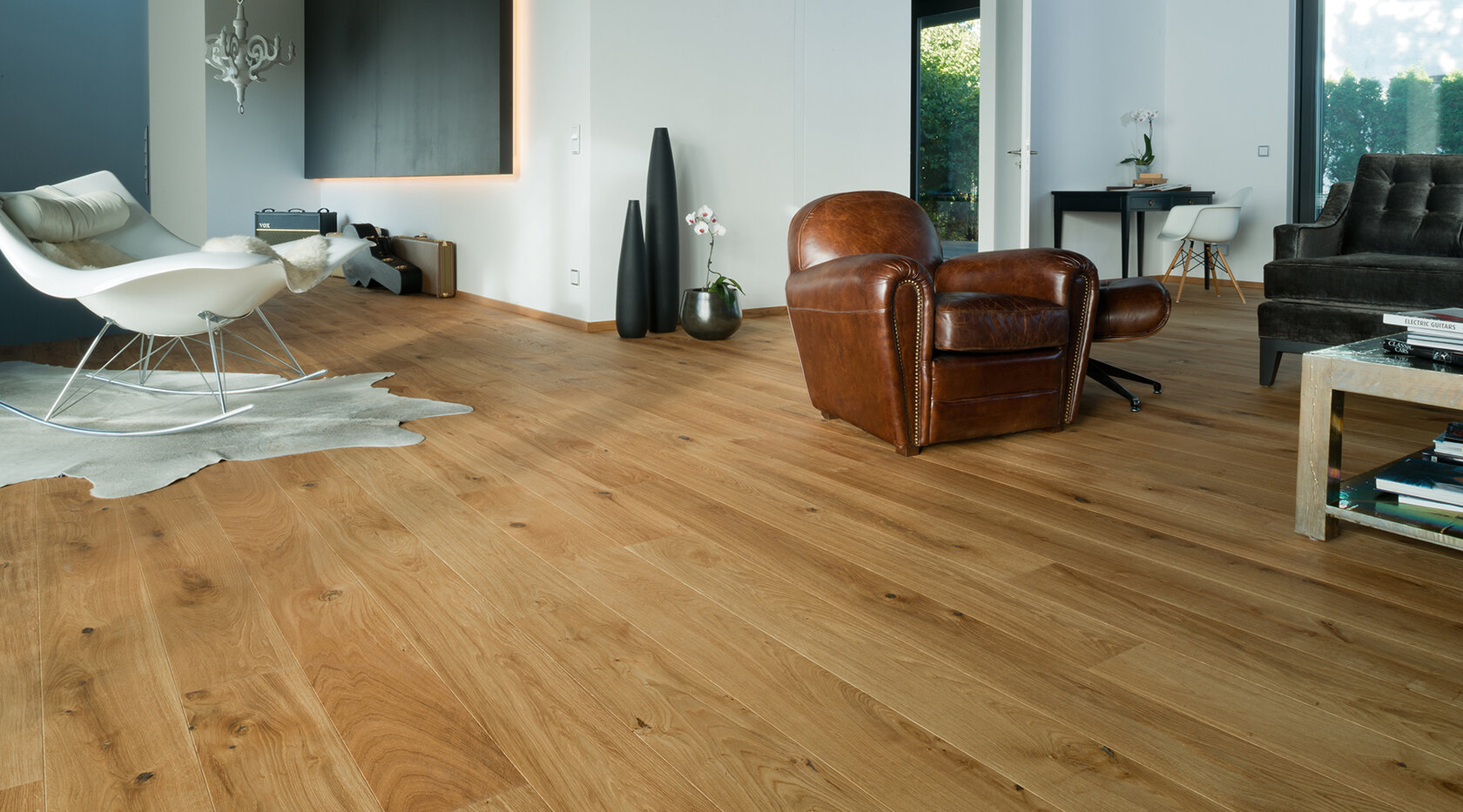FAQ's floor
Frequently asked questions:
There is often uncertainty as to whether a PE film actually has to be used always and everywhere. The PE film serves as protection against rising or trailing moisture from the substrate. Without PE film, the moisture can rise, causing the floor to bulge/stipple. In addition, the PE film creates a slippery floor surface. Engineered and pre-finished floors react to changes in room humidity with "swelling or shrinkage". If this movement of the floor is prevented, gaps may form. A PE foil is always required for floating installation.
The installer must decide on the necessity of expansion joints on site. However, it is important that experts follow the manufacturer's instructions in the event of damage.
Our information on installation size refers to floating installation. They are indicative in order to provide orientation for the user. With parquet and SPA Rigidboards, full-surface bonding means that expansion joints are not required, unless they are structural expansion joints. These must be incorporated into the top layer.
Gluing prefabricated floors brings a slight improvement in walking comfort. However, prefabricated floors are basically not designed to be glued.
The bonding of tilo vinyl short planks (1.2 m), prefinished cork floors and linoleum is possible and permitted
- at a subfloor moisture content of 1.8 % CM (this can be determined by the floor layer),
- the use of tilo Elastic adhesive and
- a maximum installation size of 6 x 6 meters.
The gluing of long planks (SOLIDANO, ELITO, GRANDO - 2.2 m) and the gluing of veneer floors (PORTO, UNO, EFFECTO) is not allowed.
Gaps often occur when the humidity or temperature of the air changes beyond the permitted level. Wood reacts to humidity, vinyl to temperature. In principle, this means making sure that humidity and temperature are kept stable.
Tips to avoid gaps
- During the heating period, make sure that the recommended minimum room humidity is maintained! This can be found in the installation instructions..
- Before installation, make sure that a PE foil is used (see also tilo FAQ #2) and that the subfloor is dry before installation!
- The floor must be unrestrictedly free of movement, i.e. it must not be fixed at the edge (not even partially). No heavy pieces of furniture or other fixings may be used!
- Check the joints before laying the floor to make sure that there is no damage here (this can be caused, for example, by transport damage or improper laying).
- Air-condition the material for at least 48 h before laying it.
In principle, all tilo flooring products are approved for installation on underfloor heating.
However, the heating system should be temperature-controlled so that it can be ensured that the maximum permissible surface temperature specified in the installation instructions is not exceeded on the free surface of the floor area.
This depends on the type of installation and the room situation. If a continuous installation is carried out, i.e. the second installation row is started with the remaining piece of the first row, there is hardly any or only a minimal amount of waste to be taken into account.
Since allergies can be triggered by different substances, which are usually also considered harmless to health, we recommend testing a sample piece to see if allergic reactions occur on contact with the desired product.
For both technical and hygienic reasons, it is imperative to remove carpets.
The extent to which PVC coverings need to be removed depends on the respective situation and the product at hand. Your trusted specialist dealer can advise you in detail on this.
We confirm that tilo natural floors do not pose any health risks. The formaldehyde content in the finished product is below the legally prescribed limit of 0.1 ppm. No solvents, heavy metals, tin, MDI, TDI, halogens or other harmful substances are used in production.
In principle, wooden floors are only suitable for installation in dry rooms.
With tilo's unique colour worlds, you also have the option of installing your favourite decor in damp rooms as a waterproof SPA Rigidboard or PRO+ adhesive sheet. For more information, see our /DESIGN floors, SPA & PRO+ collections.
With a wear layer thickness of approx. 3.5 mm and an average layer loss per sanding of approx. 0.5-0.7 mm, the surface can be sanded 3 times.

